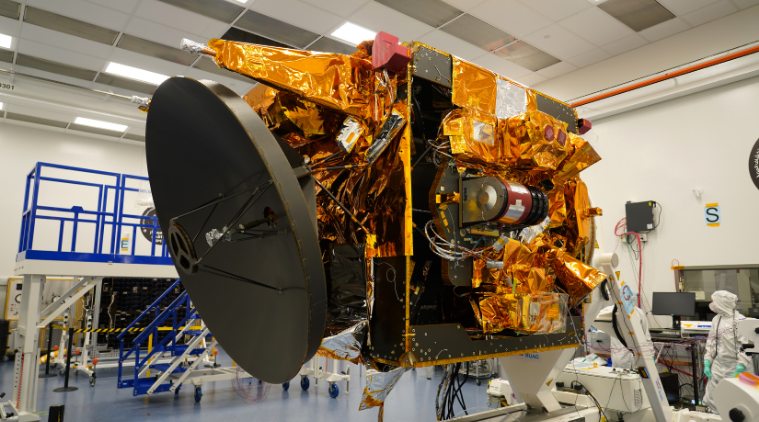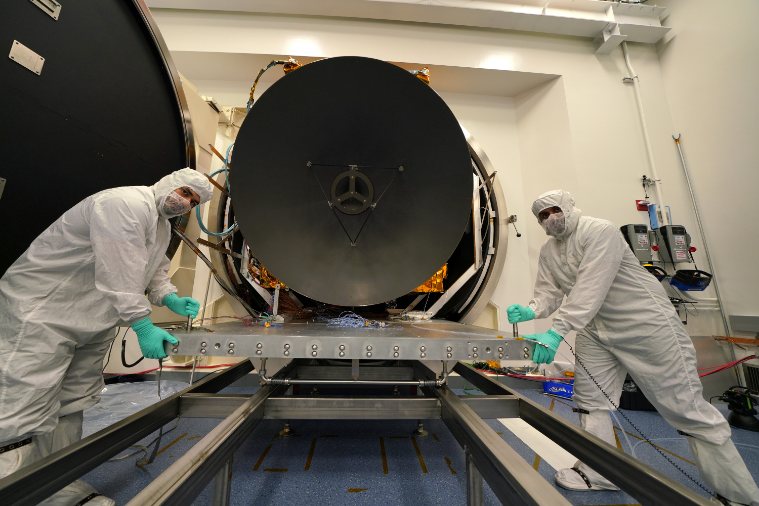 From Dubai to Mars, With Stops in Colorado and Japan
From Dubai to Mars, With Stops in Colorado and Japan
In December, a spacecraft named Hope was motionless in the middle of a large clean room on the campus of the University of Colorado, mounted securely on a stand.
But engineers were tricking Hope — a foil-wrapped box about the size and weight of a Mini Cooper — into thinking it was speeding at more than 10,000 mph as it pulled into orbit at Mars. It was a simulation to make sure the guidance, navigation and control systems would respond correctly to a variety of less-than-perfect circumstances when Hope arrives at Mars for real next year.
Although this spacecraft was assembled on US soil, it will not be exploring the red planet for NASA. Hope is instead an effort by the United Arab Emirates, an oil-rich country smaller than Maine and one that has never sent anything into the solar system.
Emirati engineers worked here, close to the ski slopes of the Rocky Mountains and far from the sands of the Middle East, learning from their U.S. counterparts. It was part of the Emirates’ plan, when petroleum no longer flows as bountifully, to invest its current wealth in new “knowledge based” industries.
“How do you develop highly skilled people that are able to take on higher risks?” said Sarah al-Amiri, the minister of state for advanced sciences for the UAE, who also leads the science portion of the Mars mission. “That was the reason to go to space exploration.”
[ Express Tech is now on Telegram. Click here to join our channel (@expresstechie) and stay updated with the latest tech news ]
As a newcomer, the UAE has taken a novel approach. It could have tried to do everything itself, developing homegrown technology similar to what India has done. That would have taken years longer. It could have bought someone else’s spacecraft design, which would have been the quickest path.
Instead, the country has sought partners with long experience in sending machines into space. This, its space team believed, would help avoid many of the pitfalls of trying to pull off such missions for the first time while training future engineers who will be expected to step up to bigger roles in the next mission. In the process, the country’s leaders hope to sow seeds for future companies.
“The government really wanted to create that ecosystem or at least help in creating that ecosystem,” said Omran Sharaf, the project manager for the Emirates’ Mars mission. “Soon. They want to accelerate the process. Don’t start from scratch. Work with others. Take it to the next level now.”
‘We’re going to learn a tremendous amount’
Last year, for a nascent astronaut program, the Emirates bought a seat on a Russian Soyuz rocket and sent Hazzaa al-Mansoori for an eight-day stay at the International Space Station.
Hope will be just one of a flotilla of robotic spacecraft scheduled to launch this summer during a once-in-26-months alignment of Earth and Mars that enables a relatively short trip of some 300 million miles and seven months to the red planet.
The other three will be the products of established space powers: NASA, China and a collaboration between Russia and the European Space Agency.
Compared with those, Hope is modest in size and scope, with costs fitting into what managers described as a “tight budget.” While the other missions each aim to put a rover on the surface, the Emirati spacecraft will make observations from orbit.

Still, it will be more than just a technical triumph.
“We were requested to send a spacecraft to Mars, but not send space junk, basically,” al-Amiri said. “Send a spacecraft that not only captures an image of the planet to declare you’re there but actually provides you with valuable scientific data.”
In September 2014, India celebrated putting a spacecraft in orbit around Mars and boasted how its price tag was a fraction of that for MAVEN, a NASA probe that arrived two days earlier. Both are still there.
But the Indian spacecraft did not have scientific instruments sensitive enough to make significant discoveries. By contrast, MAVEN has determined how quickly the Martian atmosphere is being stripped away by the solar wind: about 4 pounds a second. This information is an important clue in the puzzle of understanding why early Mars, which was warmer and wetter, turned into the cold, barren, almost airless place it is today.
Hope’s aim is to fill in a gap in MAVEN’s findings by looking at the dynamics closer to the ground that influence the rate of leaking.
“You need to understand the role that Mars plays in the loss of its atmosphere,” al-Amiri said.
When a planetwide dust storm raged on Mars in the summer of 2018, MAVEN observed that the amount of hydrogen in the upper atmosphere rose. The three instruments on Hope — an infrared spectrometer, an ultraviolet spectrometer and a camera — will be able to help explain how the dust pushed the hydrogen upward.
In addition, from its high-altitude perch — an elliptical orbit that varies from 12,400 miles to 27,000 miles above the surface — Hope will give scientists a global view of Martian weather, noting changes in temperature and other conditions during the course of a day.
“That’s one of the fundamental new measurements we haven’t seen before,” said Bruce M. Jakosky, a professor of geological sciences at the University of Colorado who is MAVEN’s principal investigator and a member of the science team for the Emirati mission.
Previous orbiters have generally swooped much closer to the Martian surface, usually in orbits devised to pass over a given location at the same time of day each time. That was more useful for detecting slow changes on the surface rather than in the air.
“I think the atmosphere has been understudied,” said Philip R. Christensen, a planetary sciences professor at Arizona State University, which built the infrared spectrometer for Hope. That instrument will capture data on the dust particles and ice clouds and track the movement of water vapor and heat through the atmosphere.
The spacecraft is to spend at least two years in orbit, monitoring a full cycle of Martian seasons.
“I think we’re going to learn a tremendous amount,” Christensen said.